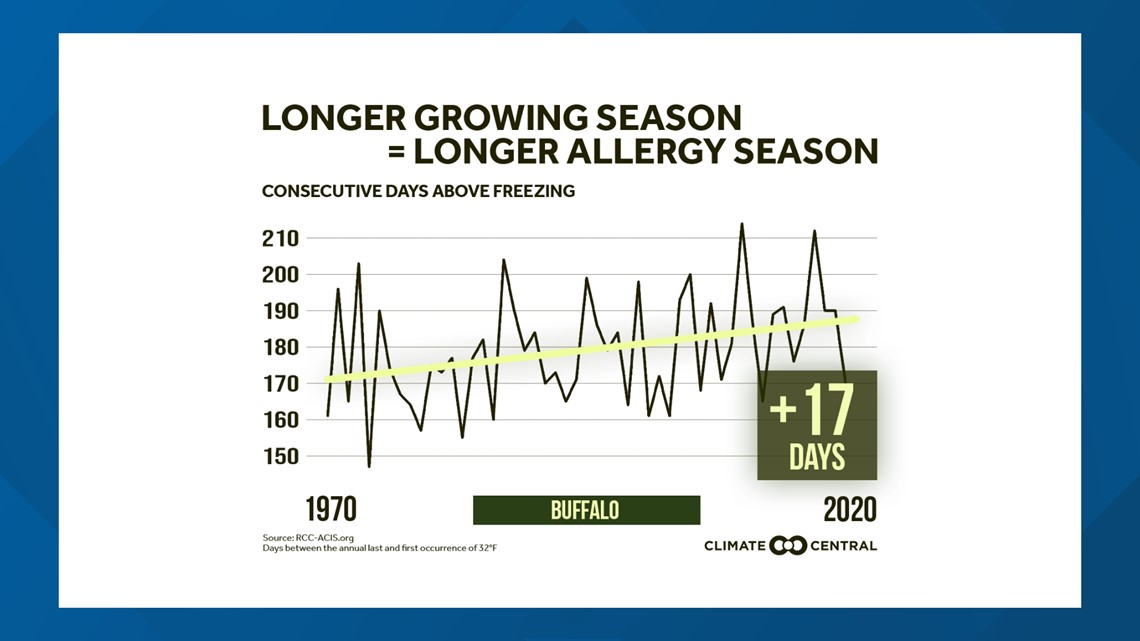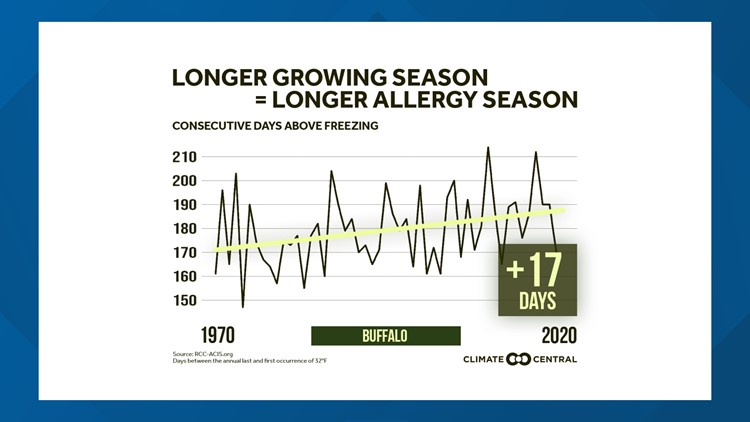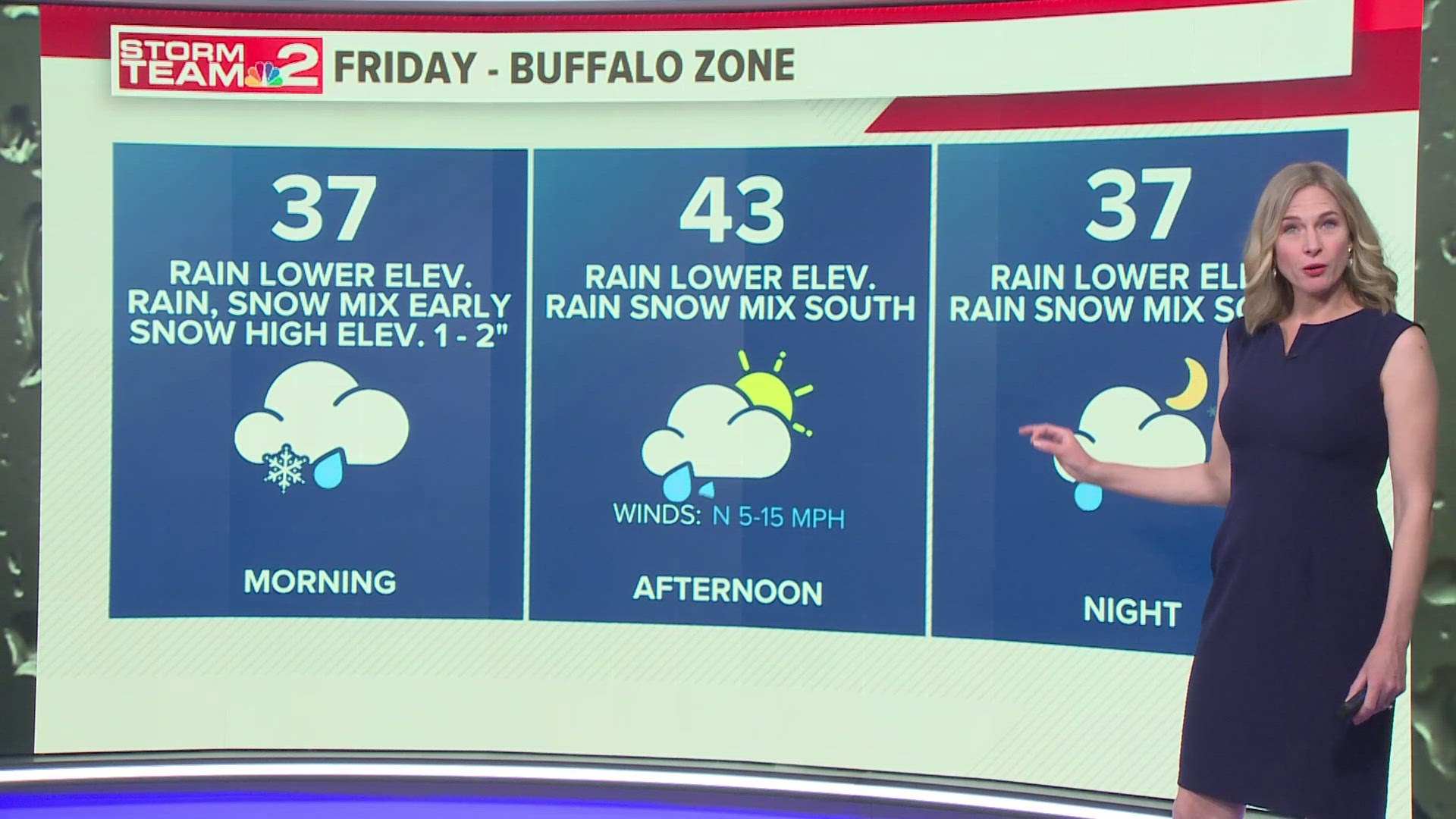BUFFALO, N.Y. — While the first tree pollen counts appeared in mid-March, it wasn't until later in the month and early April when they started really ramping up to more significant levels across Western New York.
Western New York's pollen season typically begins sometime between mid-late March with the first pollen counts showing up after a few consecutively dry and warmer days. Last year's pollen season began a little earlier because of a mid-March dry and warm spell.
And while there were also some warmer days in mid-March that allowed for the first blooms, the turbulent ups and downs of the seasonal springs swings this year kept pollen counts, for the most part, at bay last month. That is, until the last day of March and the first few of April when temperatures started to go up. No matter when those pollen counts go up, pollen season always begins with tree pollen.
Tree pollen is what dominates the early pollen season. So if you're sensitive to those allergens, especially Maple, Elm, Poplar, or Juniper pollen, then you may begin to feel it over the next few days.
Pollen season then transitions to grass pollen in May, weed pollen in June/July, and Ragweed by late August. Though Ragweed isn't prevalent in Western New York, the entire pollen season can last from mid-March to mid-late September locally.
In addition, The American College of Allergy, Asthma, and Immunology notes that a particularly rainy forecast period or spring can lead to rapid plant growth early on and extend the allergy season into the fall.
As for the growing season, that usually begins when there are no longer morning low temperatures at or below freezing in the forecast, which, for this region, doesn't usually happen until mid-April.
But there is a correlation between the length of the pollen and growing season, and climate data suggests both are becoming longer. Over the past 50 years, Buffalo has experienced an increase in the number of days between the first and last day below freezing. That number is 17 days, extending the growing and pollen season by over two weeks.


Keep in mind everyone's sensitivity to pollen, and allergens, in general, is different and wide-ranging. It's not only the pollen category but a specific type that can trigger a reaction. has resources and guidance for seasonal allergy suffers.
You can check local pollen impacts and the pollen forecast here.
RELATED STORY:


